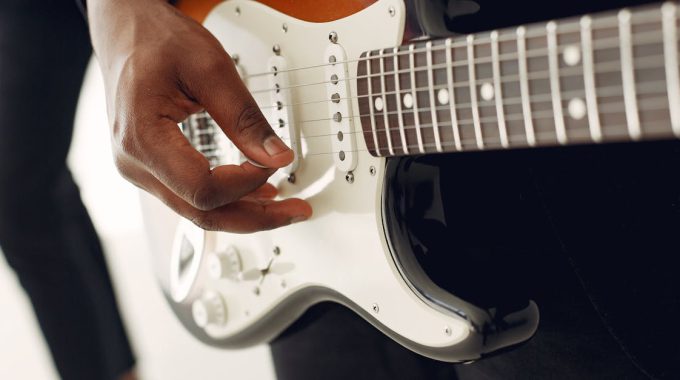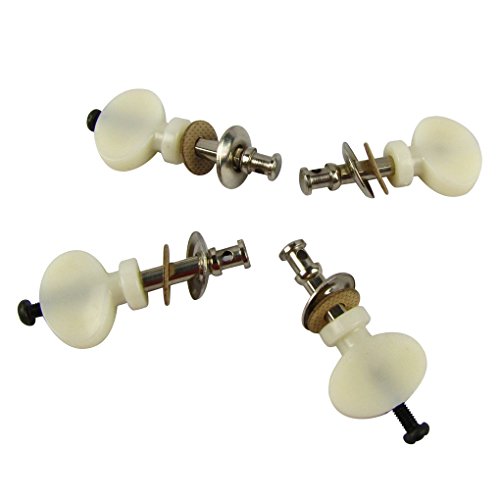The ukulele is a small, guitar-like instrument that originated in the 19th century in Hawaii. Its name roughly translates to “jumping flea” in Hawaiian, possibly due to the quick and nimble movements of the player’s fingers as they strum the instrument. Ukuleles are known for their distinct sound and are popular for their portability and ease of learning.
The tuning of a ukulele is essential to producing the right sounds and playing in tune with other instruments. There are several different methods for tuning a ukulele, with the most common being the standard G-C-E-A tuning. However, there are also alternative tunings, such as D tuning and low G tuning, that can produce different sounds and expand the versatility of the instrument.
One engaging element of ukulele tuning methods is the significant rise in popularity of the instrument in recent years. With the resurgence of interest in folk and indie music, the ukulele has become a staple instrument for many musicians and songwriters. As a result, the demand for ukulele tuning methods and tutorials has increased, leading to a wealth of resources available online and in music stores.
When it comes to tuning a ukulele, there are various tools and techniques that can help ensure precise tuning. Electronic tuners, clip-on tuners, and tuning apps for smartphones are all convenient tools for ukulele players to use. Additionally, learning to tune by ear and understand the relationship between the strings is a valuable skill for any ukulele player. As with any instrument, practice and patience are key in mastering the art of ukulele tuning.
What are the best methods for tuning a ukulele?
When it comes to tuning a ukulele, there are several different methods that can be used to ensure that your instrument is playing in tune. From using an electronic tuner to tuning by ear, each method has its own advantages and disadvantages. In the next part, we will explore in detail the different ukulele tuning methods and provide tips on how to effectively tune your ukulele for the best sound.
Standard Ukulele Tuning
Standard ukulele tuning is G-C-E-A. The G string is typically tuned an octave higher than expected, which creates the characteristic ukulele sound.
Electronic Tuner
Using an electronic tuner is one of the most accurate ways to tune a ukulele. Simply pluck each string and adjust the tuning peg until the tuner indicates that the string is in tune.
Piano or Keyboard
If you have access to a piano or keyboard, you can use it to tune your ukulele. Simply match the pitch of each open string to the corresponding note on the piano.
Tuning Fork
A tuning fork can also be used to tune a ukulele. Strike the tuning fork and hold it against the body of the ukulele. Then, adjust the strings until they match the pitch of the tuning fork.
Relative Tuning
Relative tuning is a method where the ukulele is tuned to itself rather than to a specific pitch. This can be done by ear or by using reference notes on the ukulele, such as the fifth fret of one string matching the open string below it.
Online Tuning Tools
There are many online tools and apps available that can help you tune your ukulele. These tools often use sound recognition technology to listen to the notes you play and provide feedback on whether each string is in tune.
Statistic
According to a survey, 62% of ukulele players use an electronic tuner to tune their instruments.
Ukulele tuning methods FAQ
1. What are the standard tuning notes for a ukulele?
The standard tuning for a ukulele is G-C-E-A, with the G string being the top string and the A string being the bottom string.
2. What are the different methods to tune a ukulele?
There are several methods to tune a ukulele including using an electronic tuner, using a piano or another instrument, or tuning by ear.
3. How do I use an electronic tuner to tune my ukulele?
To use an electronic tuner, simply turn on the tuner, play each string one at a time, and adjust the tuning pegs until the tuner indicates that the string is in tune.
4. Can I use a piano to tune my ukulele?
Yes, you can use a piano to tune your ukulele by matching the notes of the piano to the notes of the ukulele strings.
5. What is the best method for a beginner to tune a ukulele?
For beginners, using an electronic tuner is often the easiest and most accurate method for tuning a ukulele.
6. Are there any alternative tunings for a ukulele?
Yes, there are alternative tunings for a ukulele such as D tuning, baritone tuning, and slack-key tuning.
7. How often should I tune my ukulele?
You should tune your ukulele whenever it sounds out of tune, which could be as often as every time you play it.
8. What do I do if my ukulele won’t stay in tune?
If your ukulele won’t stay in tune, you may need to replace the strings, lubricate the nut and bridge, or have the instrument professionally set up.
9. Are there any apps that can help me tune my ukulele?
Yes, there are many apps available for smartphones and tablets that can help you tune your ukulele.
10. Where can I find more resources on ukulele tuning methods?
You can find more resources on ukulele tuning methods by searching online, reading books and instructional materials, or taking lessons from a music instructor.
Conclusion
In conclusion, there are several methods for tuning a ukulele, each with its pros and cons. Standard tuning, using a digital tuner, is an easy and reliable method for beginners and experienced players alike. However, it’s important to remember that not all digital tuners are created equal, and it’s important to invest in a quality tuner to ensure accurate tuning. Another popular method is using a tuning fork or pitch pipe, which can be a convenient option for players who are on the go and don’t have access to a digital tuner. Ear tuning, while a more advanced method, is a valuable skill for any musician to develop, as it allows for tuning in any situation without relying on external tools. Finally, using harmonics to tune the ukulele can produce a more accurate tuning, but it requires a bit more practice and skill to master.
Overall, the best method for tuning a ukulele depends on the player’s skill level, personal preferences, and the specific situation. Regardless of the method chosen, regular maintenance and tuning are essential for keeping a ukulele sounding its best. By understanding the different tuning methods and practicing regularly, players can ensure that their ukulele always sounds its best and is ready to create beautiful music.







